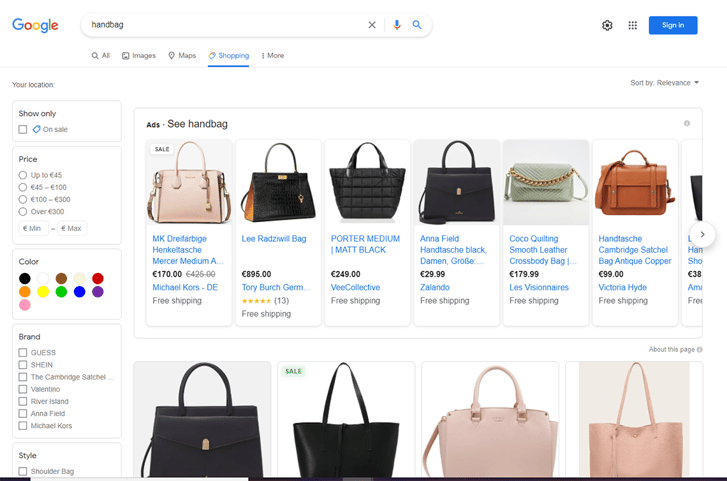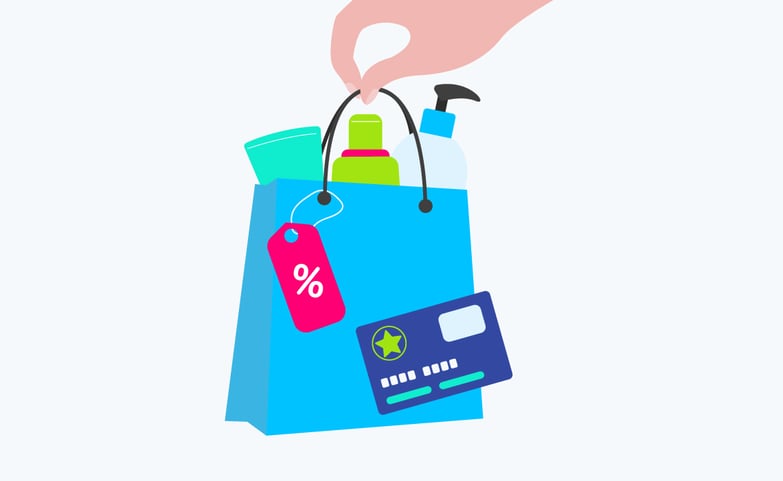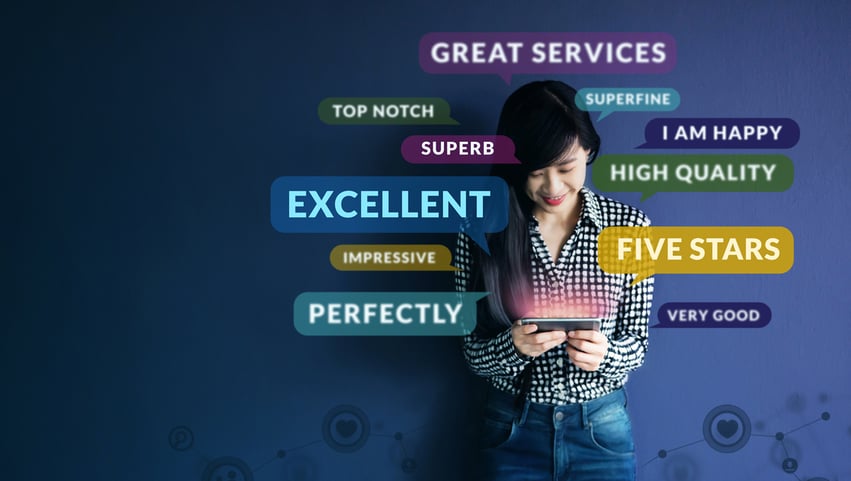How retailers are moving beyond the online catalog model of ecommerce to connect with customers
As the name suggests, experiential shopping is a term that originated in the world of brick-and-mortar stores. In city centers around the world, it encompasses the idea that, rather than just going into a shop to browse and to get advice from the sales staff, the in-store experience should be rich and immersive. It’s a term that describes retail spaces where shoppers encounter artworks, live events, cafés, lounging areas, video displays and virtual reality technology.
It’s an approach often used to reach younger shoppers, such as those who visit London’s House of Vans. Located beneath railway arches near Waterloo Station, this is a 2,800m2 space that houses a gallery, a VansLab artist incubator space, a cinema, live events, cafés, bars and even a skatepark. And, should you be so distracted as to need reminding that Vans started life as a skateboard shoe manufacturer selling directly to the public in Anaheim, California, there’s a ‘gifting suite’ too where visiting musicians, artists and other influencers are presented with Vans’ clothing to wear.
Of course, not all brands and retailers go this far, but some of the ideas behind Vans’ philosophy, which is also on view at the Chicago House of Vans and at pop-up venues around the world, can be applied across all kinds of sectors, in particular:
- Via House of Vans, the company talks to its customers directly, without a retailer mediating. More than this, it reaches its customers directly ‘out in the wild,’ gets insights into their lives when they’re not shopping.
- Vans conveys its values and shows how these values dovetail with those of its customers. Even the Waterloo location is important here because the undercroft of the nearby Southbank Centre is seen as the spiritual home of British skateboarding.
Does experiential shopping work with more mature consumers?
It’s not just brands aimed at younger demographics that employ these kinds of techniques. Over recent years, the British department store John Lewis has looked at ways to make its stores more exciting and to give customers reasons to visit.
In 2019, for example, John Lewis began experimenting with “experience playgrounds” in its revamped Southampton city center concept store. Here was a world of cookery classes, barista workshops, personal styling packages and a rooftop orchard to visit. The department store leveraged its upmarket Waitrose supermarket brand in many of these activities.
This kind of approach came to an abrupt halt out in the physical world when the coronavirus pandemic reached the UK in early 2020. Yet the story of John Lewis is particularly fascinating – and instructive – herein that, by June 2020, it had taken these kinds of techniques online.
Partnering with insurance provider Vitality, the retailer offered myJohnLewis and myWaitrose members:
• The opportunity to book live classes presented by Waitrose nutritionists on healthier food choices and meal planning
• Sessions on sleep and cardio health
• Former Olympic champion Lord Sebastian Coe was recruited to take part in a session on posture
Here was John Lewis proving it was committed to helping its customers to navigate a lockdown world, that it understood we were all going through an extraordinary experience. Widening out that idea, virtual events, masterclasses and workshops have become a key component of the John Lewis website offering. Both customer experience and the shopping experience are central to the retailer’s thinking – experiential retail.
What are the drivers behind using experiential shopping techniques digitally?
One way to look at John Lewis’s initiatives is to see them as proof of how online retail is as ripe for reinvention as physical stores.
To understand what we mean here, if you go back just a decade, user experience within e-commerce was all about getting customers into the sales funnel and then to the checkout. This reflected an online sector that was desktop-PC based and had refined a digitally-driven catalog shopping experience with its roots in a dial-up world.
In contrast, today’s digital world is:
- Faster. In 2020, 89% of households in the European Union had access to broadband. Worldwide, there were 1.18bn broadband connections in 2020.
- Mobile-first. Younger consumers often access digital services via their smartphones. In January 2021, of the 4.66bn active internet users worldwide, 92.6% (4.32bn) accessed the internet via mobile devices. Demographic change and the widespread adoption of 5G will only deepen this trend.
As this new world comes into focus, it’s important to stress the online catalog model hasn’t gone away – and indeed, it won’t entirely. One reason consumers shop at Amazon is that you can see its offering as akin to a supremely well-organized catalog where it is easy to search for items.
However, the underlying point is that it is no longer enough just to be good at making products easy to find and buy. After all, even the preeminent catalog retailer, Amazon, now promotes itself via its Prime offering of on-demand video content and free delivery.
How will experiential shopping develop in the near future?
The first point to recognize here is that forward-looking brands and retailers are increasingly looking at ways to engage customers online. In a world where it is straightforward for consumers to find the lowest price on an item via Google, retailers and brands recognize the need to work to stand out. They are doing so through shoppable content, live stream events, apps and mobile-first offerings, social media, video, and the kind of online tools used in the homewares sector so that consumers can experiment with colors and styles.
This is only the beginning. Other initiatives show just how imaginative and innovative online experiential retail will be:
- In 2020, the Berlin-based Reference Festival held a virtual fashion show of Animal Crossing avatars dressed up in looks inspired by high-end brands Loewe, Prada and GmbH. Selling within games will become commonplace in ten years ahead.
- L’Oréal has launched what it calls “the first digital makeup line”. Using augmented reality technology, customers can try different looks, or “Signature Faces,” via video call platforms.
- It's early days here, but in another augmented reality initiative, there’s research being done into 3D mannequins with rotating displays that change according to the profile of who’s looking at the mannequin.
Different retailers and brands will favor different techniques. However, the underlying point here is that digital commerce now takes place across multiple channels. Brands need to be able to move fast to be wherever their customers are gathering – and to offer imaginative experiences that are appropriate to that channel and audience. In this way, they will not just reach customers but build brand loyalty.
Which technologies will underpin experiential shopping?
It’s important to recognize that experiential retail isn’t just about front-end marketing flair. It’s also about making sure that when customers find their way to a product, they have the information they need to decide whether to buy that product.
To take a step back means enriching product information through a Product Information Management system, so imagery, video content and product data are all accurate and products are shown in their best light. In this way, product data can cascade out across different channels to the place where it really needs to be – which is any place where it helps a brand make a direct emotional connection with the customer.
Knowing that 73% of retail consumers use multiple channels to shop, you need to have that consistent, seamlessly provided, rich product content in each channel – your own online shop, marketplaces, social media – as well as in brick-and-mortar stores. That's especially important when you consider that customers who use one or more channels spend on average 9% more compared to those who used only one channel.
Rich content also means delivering a personalized experience. And as nearly all consumers (91%) are more likely to shop with brands who recognize, remember, and provide them with relevant offers and recommendations, personalization and experiential shopping need to work together. In this way, you can truly imagine and build experiential shopping experiences that have no limits.




